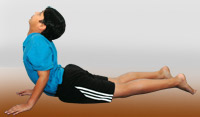 |
Completely disenchanted with the dues ex machina of authoritarian socialism, a Yugoslav writer termed his country’s politico-economic set up an “Unperfect Society”. |
And the reasoning behind the choice of adjectives is interesting, said Djilas (the author), if the grammatically correct “imperfect” had been employed, it would have implied that the opposite, “perfect” could, at some point of time, become a fact! But “unperfect” as a term, does not have a rational opposite.
So socialism being inherently incorrigible, would remain so forever!
It is tempting to use a similar expression to describe the situation in many a homestead today, especially in the upper MIG category: in the Puraanic story where the Devas and the Asuras churned the ocean to obtain the elixir of amrut, it was the noxious stuff which came out at first.
And so it seems to be with the IT revolution, the negatives are looming large, threatening to undermine one of the pillars of society, the family itself. A single family possesses multiple mobile phones, a fact that is fraught with danger of incalculable magnitude. The financial burden of mounting mobile bills is the least of it. Unspeakably sad is the alienating influence of this mini monster—teenagers are getting to be more and more “spaced out”, they know not night from day (nor care about it) and the cellular phone helps create its own version of an autistic world. Youngsters feel a generation gap even with someone just a couple of years their senior. Brazen… Crass.. Crude..Rude.. Downright Vulgar..these are the words that are the unfortunate but automatic choice to describe teenage behavior today. And in the May (’09) issue of Reader’s Digest, there is an alarming article on sexting among teenagers.. A classic case of a situation crying out for redressal.
Fortunately in yoga, we can offer a workable remedy.
The Ideal Age
In yoga workshops and elsewhere, parents often ask me, as to when a child can start serious yogabhyaas. A normal, healthy child enjoys natural suppleness up until ten years of age. Eleven or twelve appears the right age, because it is around this stage of growth that the muscles and bones acquire the necessary maturity and strength. Also, peculiarly enough, this is the time when a little bit of rigidity begins to creep in and some negative aspects of genetic predispositions start
to assert themselves. And, given the introductory remarks, it is also the time when, due to peer pressure, children begin to push for that coveted toy, the cell phone!
Structuring Yoga Sessions For Children
In age, and therefore, in body tone and temperament, children (age group 11-15) are quite different from adults and the teacher needs to keep this in mind, in designing enjoyable, meaningful sessions. In yoga, several aasanas can be strung together, like flowers used in making garlands. Such garlands (the universally known Surya Namaskaar being just one of the many possible), with their emphasis on quick movements, appeal greatly to the young, agile minds of children. Yoga is also unique in that final forms depict earthly existence in all its rainbow variety – from seemingly inanimate objects like mountains through other forms of life like vegetation, insects, birds, animals, to exalted human beings like sages, seers, even forms of gods – the spectrum is so rich! And if some stories (which our culture abounds in) surrounding some incidents concerning sages and other noble persons are skillfully woven into Yoga time, children will flock to the sessions like bees to a flower!
How Yoga Works In Children
A typical yoga workout has such variety that, over time, it makes for an excellent all round development of the person pursuing it: strength of legs, elasticity of muscle groups, suppleness of spine, skin tone and health of the inner organs – all these follow as a matter of course. And in children, it is yoga that guarantees the smoothest possible transition from childhood into adolescence. Sirshaasana has a favourable effect on the pineal and pituitary glands and Sarvaangaasana works wonders on the thyroid. Therefore, normal growth occurs in children, who start yoga around the age of ten. Such aberrations as premature puberty, pre-menstrual tension, irregular periods and the like, are unheard of in girls doing regular yoga.
To cap it all, Praanaayaama promotes all the functions of the mind – to receive, record and recall – so much that yoga kids face exams with easy, tension free confidence.
An Appeal To Parents
Adults and parents should give yoga a try, be convinced of its benefits through firsthand experience and then, smilingly invite their children, to also ‘take a dip, try a sip’. In some of my sessions, the entire nuclear household participates – the father, usually unwinding after a gruelling day at work; the mother adding feminine grace; and the children contributing with their infectious enthusiasm. Total Family Yoga – ah! But what a charming concept, and in the context of the grim reality described earlier – what an effective solution!
|
 |
T Nandakumar is a yoga exponent based in Chennai. |
|